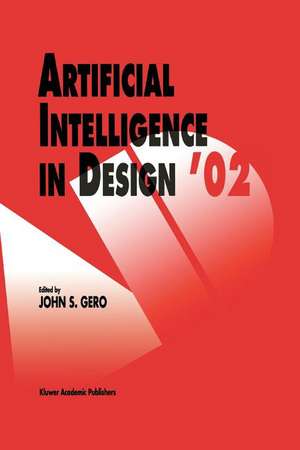Artificial Intelligence in Design ’02
Editat de Asko Riitahuhtaen Limba Engleză Paperback – 5 dec 2010
| Toate formatele și edițiile | Preț | Express |
|---|---|---|
| Paperback (1) | 1289.09 lei 6-8 săpt. | |
| SPRINGER NETHERLANDS – 5 dec 2010 | 1289.09 lei 6-8 săpt. | |
| Hardback (1) | 1304.11 lei 6-8 săpt. | |
| SPRINGER NETHERLANDS – 31 iul 2002 | 1304.11 lei 6-8 săpt. |
Preț: 1289.09 lei
Preț vechi: 1611.36 lei
-20% Nou
Puncte Express: 1934
Preț estimativ în valută:
246.70€ • 267.88$ • 207.23£
246.70€ • 267.88$ • 207.23£
Carte tipărită la comandă
Livrare economică 22 aprilie-06 mai
Preluare comenzi: 021 569.72.76
Specificații
ISBN-13: 9789048160594
ISBN-10: 9048160596
Pagini: 656
Ilustrații: X, 642 p.
Dimensiuni: 155 x 235 x 34 mm
Greutate: 0.9 kg
Ediția:Softcover reprint of the original 1st ed. 2002
Editura: SPRINGER NETHERLANDS
Colecția Springer
Locul publicării:Dordrecht, Netherlands
ISBN-10: 9048160596
Pagini: 656
Ilustrații: X, 642 p.
Dimensiuni: 155 x 235 x 34 mm
Greutate: 0.9 kg
Ediția:Softcover reprint of the original 1st ed. 2002
Editura: SPRINGER NETHERLANDS
Colecția Springer
Locul publicării:Dordrecht, Netherlands
Public țintă
ResearchCuprins
Design Synthesis.- Synthesis in designing.- A graphical notation for mixed-initiative dialogue with generative design systems.- Web-based configuration of virtual private networks with multiple suppliers.- Frameworks for Design.- Constructing design worlds.- The situated function—behaviour—structure framework.- Representational flexibility for design.- Spatial Synthesis and Analysis.- Analysis of architectural space composition using inductive logic programming.- Towards an architectural design system based on generic representations.- Digital sandbox.- Conceptual Knowledge in Design.- MMforTED: A cognitive tool fostering the acquisition of conceptual knowledge about design products.- From concept to embodiment: challenge and strategy.- Artificial intelligence for the design and grading of precious stones.- Learning from Human Designers.- Using protocol analysis to investigate collective learning in design.- 5. 8 analogies per hour.- Towards computational tools for supporting the reflective team.- Evolutionary Approaches in Design.- An evolutionary approach to the inverse problem in rule-based design representations.- Evolving three-dimensional architecture form.- Strategic shape design.- An evolutionary framework for enhancing design.- Knowledge Support for Design.- Knowledge support for customer-based design for mass customization.- Elucidating the design requirement for conventional and automated conceptual design.- Case-based design facilitated by the design exemplar.- Systemic Support.- Connectivity as a key to supporting design.- Automated (re-)design of software agents.- Automated toolset selection for feature manufacturing.- Components in Design and Design Models.- Requirements specification and automated evaluation of dynamic properties of a component-baseddesign.- Identifying component modules.- Perspectors.- Product data exchange using ontologies.- Author Index.- Contact Authors’ Email Addresses.
























